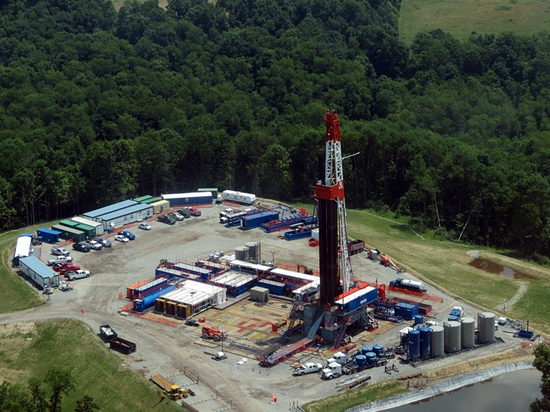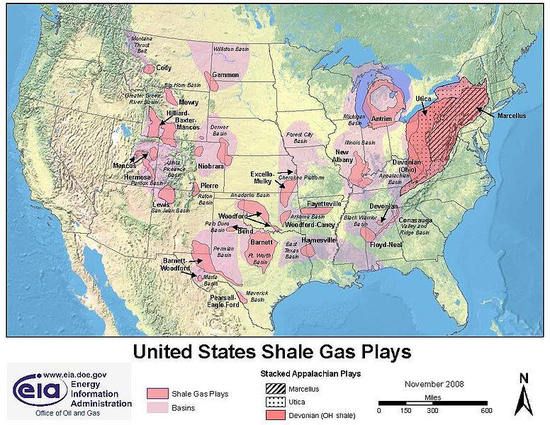Baseline estimates, such as calculating the maximum load on trucks, ships or planes are critical for engineers to model cause and effect. The Korean ferry tragedy is the latest example of the problem with overweight cargo that likely capsized the ship.
Modeling is a must to plan for the next 100-year storm, such as Hurricane Sandy. It's also key to understanding the short- and long-term effects fossil fuels pose on global warming. To do it correctly requires baseline data to make comparisons and validate findings.
One example is how little Norway handles oil spills compared to the United States. Twice a year, Norway dumps crude oil into the ocean in a "live" trial to test the latest spill cleanup technology in real currents, in cold saltwater, and moving waves. Lab simulation is fine, but it's nothing compared to field tests in the real media.
Since the runaway BP Oil Spill of 2010, the U.S. still tests oil spill tools at inland swimming pools in Colorado and New Jersey. Why? A narrow-focused EPA doesn't allow companies to test in the sea under real conditions. Scientists can't pollute, not even a drop, not even to collect real data.
Over the past half century, Norway hasn't allowed a single drop of offshore oil from a spill to reach its shores.
Spurred into Action by the EPA Blindspot
With the EPA having little idea of how much methane emissions have been leaked during hydraulic fracturing, there's no way to know how much of the greenhouse gas has been accumulating in the atmosphere.
In 2012, Cornell University's Jed P. Sparks, a professor in the departments of Ecology and Evolutionary Biology, uncovered the EPA's data deficit and saw the agency had underestimated methane plumes from fracking sites that were, in a word, baseless.
Photo: A wellpad in southwestern Pennsylvania. A Purdue and Cornell study found high levels of the greenhouse gas methane above shale gas wells during the drilling stage--a production point not thought to be a significant emissions source. [Credit: Dana Caulton]
What inspired Jed Sparks back then was the lack of baseline data on naturally released methane emissions released into the air during fracking. The new way of extracting trapped gas has grown into a booming industry that's starting to be exported globally to other shale formations around the world. That concerned Sparks.
What would all the new wellsites coming online mean to the earth's atmosphere? Would they contribute to a chorus of methane aerosols?
Launching The Fracking Methane Study
The title of the study -- "Toward a Better Understanding and Quantification of Methane Emissions from Shale Gas Development" -- led by Jed Sparks, in collaboration with a dozen other scientists and professors, including Penn State and Paul B. Shepsona, a professor in the departments of Chemistry, Earth Atmospheric and Planetary Science, and Aviation Technology at Purdue University, speaks volumes about establishing a true baseline on methane emissions.
A "better understanding" was clearly needed.
"My frustration grew from the overall arguing about model estimates, the 'yours better than mine' chatter that's so prevalent," he said via Skype from New Zealand on Earth Day, no less. He added, "The study needed actual data from the field with measurements taken in aircraft above the plumes. And Paul from Purdue, who is a pilot, flew over the hydraulic fracturing sites. Our team helped to shorten the time frame in funding, which was provided by the David R. Atkinson Center for a Sustainable Future at Cornell University."
That avoided the longer federal grant process with NIST and other agencies. Knowing he needed to move fast -- for an academic research study -- Jed Sparks plotted the logistics of the study. He chose the southwest corner of Pennsylvania, the heart of the Marcellus Shale play, recruited Paul Shepsona, and then built a team of specialists and scientists from other universities across the United States.
Photo: Researchers used the Purdue Airborne Laboratory for Atmospheric Research, a specially equipped airplane, to measure plumes of methane gas above shale gas wells in southwestern Pennsylvania. [Credit: Paul Shepsona.]
"Paul and I worked together at universities that had some experience. Tony Ingraffea at Cornell got us through the public record," Jed Sparks said.
Equipment to Measure Methane Molecules
Choosing the right equipment to find, track, and capture the invisible methane plumes flying over the fracking sites became the critical next step. For data collection, the Sparks-led research team purchased a machine called the Cavity RingDown Spectroscopy (CRDS) from Piccaro, which prides itself on providing solutions for extreme science to "measure molecules anywhere."
The CRDS uses near-infrared absorption spectrum of the light wavelengths to enable it to read the fingerprints of "nearly ever small gas-phase molecule (e.g., CO2, H2O, H2S, NH3). Once establishing that, gas plumes can be traced back to the source," Jed Sparks said. "Beside the CRDS technology, the equipment package included a flow-through nozzle and manual sampling on board the small aircraft. They each weigh 200-300 pounds."
With the field study conducted two years ago, I asked if drones could be used in future investigations.
"Not the small drones that carry cameras, but a military drone could be retrofitted, I presume. The Hellfire missiles weigh a few hundred pounds and could match the weight of the equipment packs. So perhaps in the future," he said.
The Fracking Process
The crux of the study discovered wellbores leaked methane trapped underground during initial drilling (vertical), and the fracking process of horizontal drilling with pressurized acid-water-chemical injection under 13,500 PSI of force. Once the fracturing of the shale strata occurs, flowback water is returned to the surface with naturally occurring heavy metals, trapped salts, and radioactive materials, along with the harsh chemicals that were used to frac and is collected in frac ponds to be aerated outdoors for up to six weeks, before being sent off to treatment plans, which were never designed to handle such a toxic stew laden with hard minerals.
Map: Shale Gas Formations in Continental United States. [Credit: U.S. Energy Information Agency.]
Findings from the Methane Emissions Study
Page 2 of the Study reads:
"It is important to note that we could find no evidence from state records or from our analysis of photographs taken during flights of wells in flowback after hydraulic fracturing in the area during the sampling time (discussed in Supplement Information Text). Flowback is the period after fracturing when a portion of the fracturing fluid used returns up the wellbore, flushing out with it substantial amounts of natural gas. We used data submitted voluntarily by oil and gas operators to FracFocus.org to identify one potential flowback event (for a pad not sampled in this study) and included the emissions in our bottom-up inventory. We would expect the regional emission rate to be greater if more wells were in flowback."
"Compared to coal, which stays in the atmosphere much longer, methane does have a shorter lifecycle, twenty years, than the century-long coal emissions," Jed Sparks said, then qualified, "But with the amount of fracking that's taking place today, there's a lot more methane that's being released into the atmosphere than previously been estimated. So the problem of global warming is far more acute than we thought."
He added that with a warming planet, the frozen tundra of Alaska and northern Canada will release ever more volumes of methane into the air.
"Beside poor EPA data, what item of the study surprised you?" I asked.
"The big shock... In the field of hundreds of wells, we found most of the leakage was coming from two or three wellsites," he said. "For the operators to get good volumes of gas flow, they drill six to eight vertical wellpads nearby, collocate them, and then horizontally drill 6-8 fingers for each wellbore."
Establishing the first ever baseline for methane emissions due to hydraulic fracturing, Sparks said, "We flew around to find plumes of methane concentrations. We flew in and out of a plume, and followed it back to the source. Because the instrumentation is so sensitive, it can pick up differences between the isotopic composition of methane coming from cattle production, versus seepages from the fracking wells."
The study opens with this line:
"Methane is a very important component of the Earth's atmosphere: it represents a significant component of the natural and anthropogenically forced greenhouse effect, with a global warming potential 28-34 times greater than CO2 using a 100-y horizon and even greater on shorter time scales."
Jed Sparks' thoughts on the new, better information to a once unseen problem: "We cannot solve the fossil fuel issue with the expansion of more fossil fuels. We were making decisions on old history, while putting 30 more years of greenhouse gases into the atmosphere."
He paused, and concluded, "From the point of burning CO2 from a methane molecule, we are starting off better. But methane is tricky. Even though it doesn't last as long in the air as coal emissions, it's much more powerful, more concentrated, strongly warming the earth for 10-20 years. So do we have a short-term or long-term tipping point?"
As tradeoffs go with the rest of the world watching the U.S. fracking boom with envy, with more methane released into the atmosphere in exchange for cutting back coal burning might no longer be the cleaner alternative.
Will this change President Obama's dialogue on U.S. energy and climate?
[Disclosure: As a first generation Norwegian-American, both sides of my family in Norway work in the North Sea oil and gas sector.]


